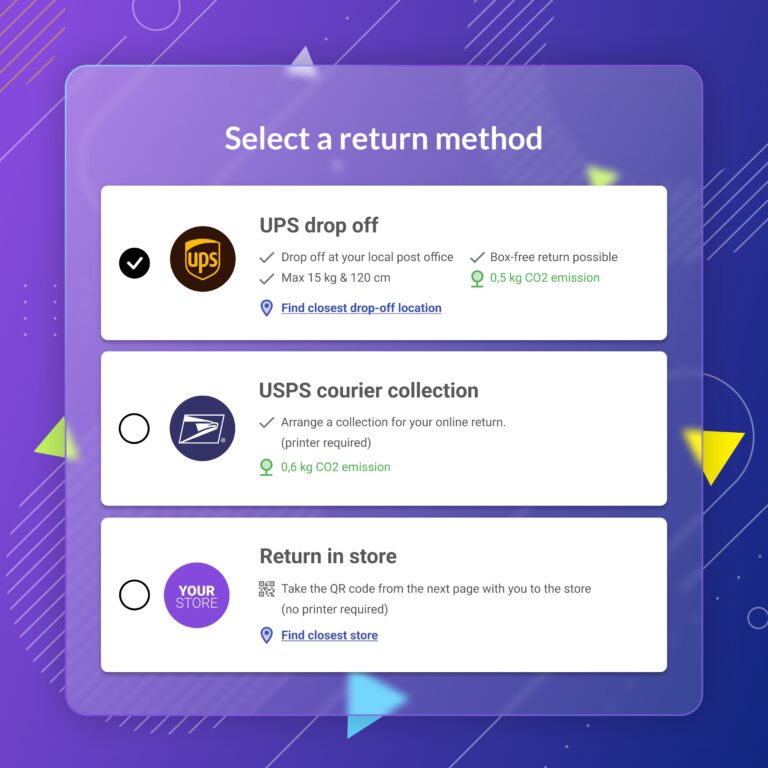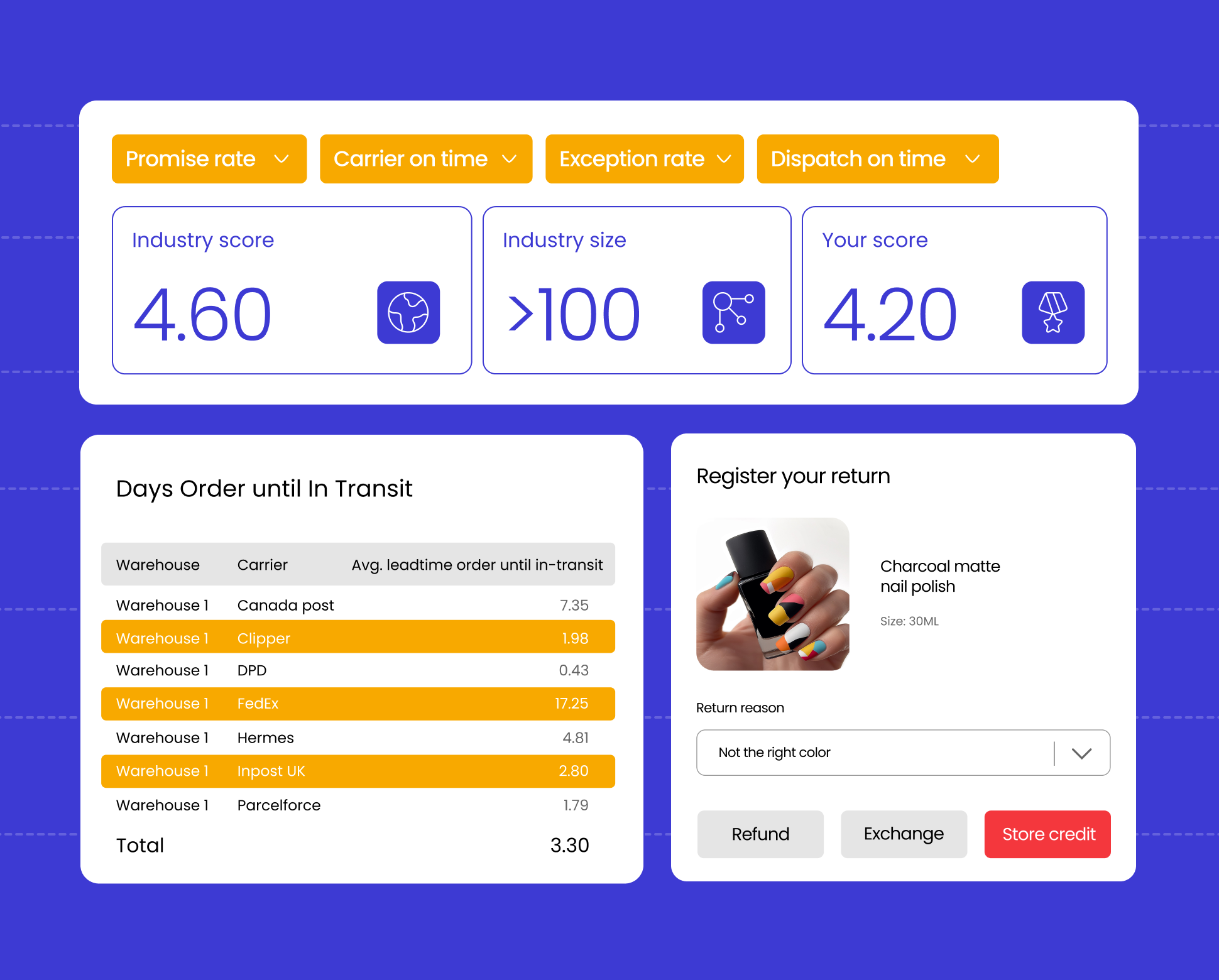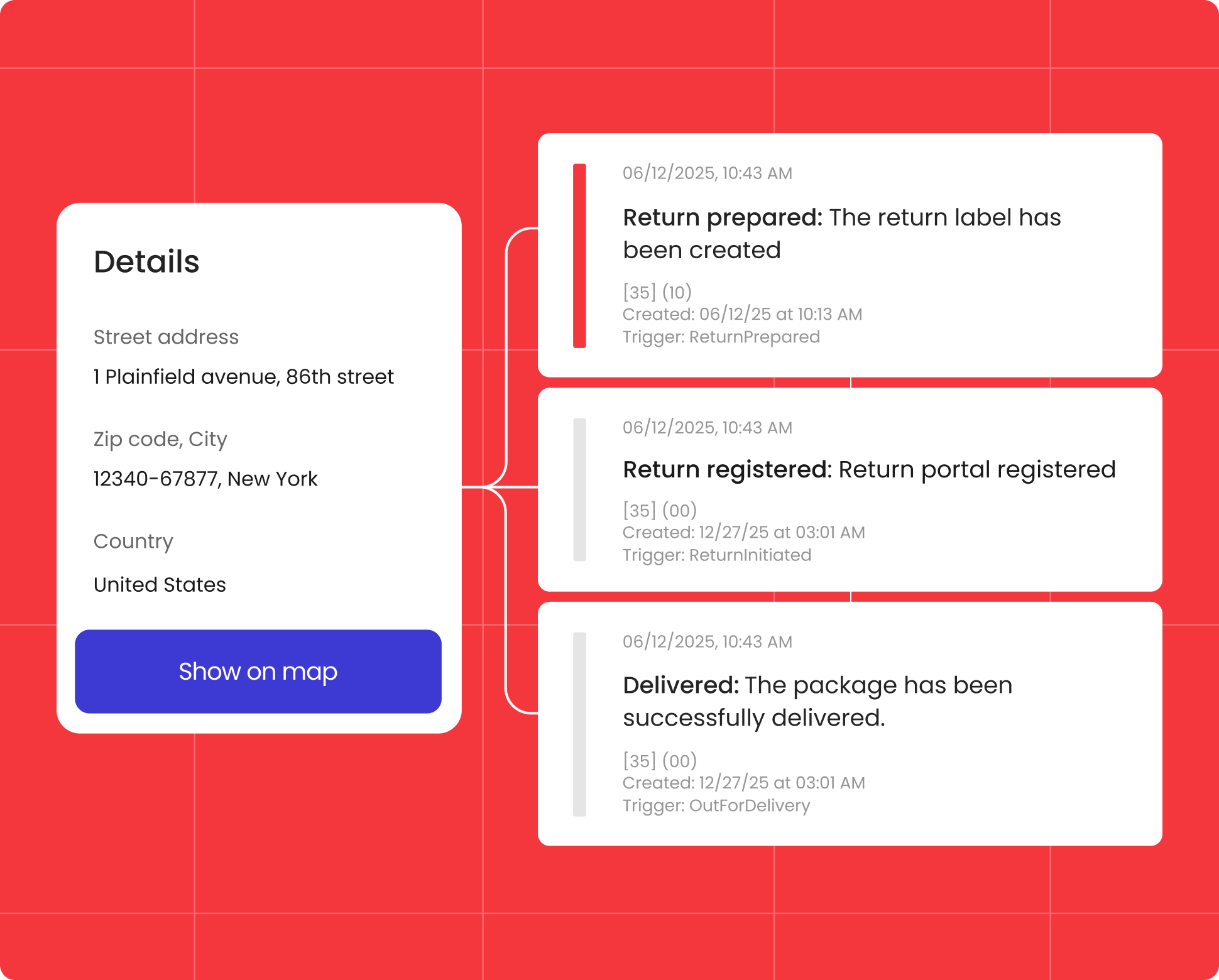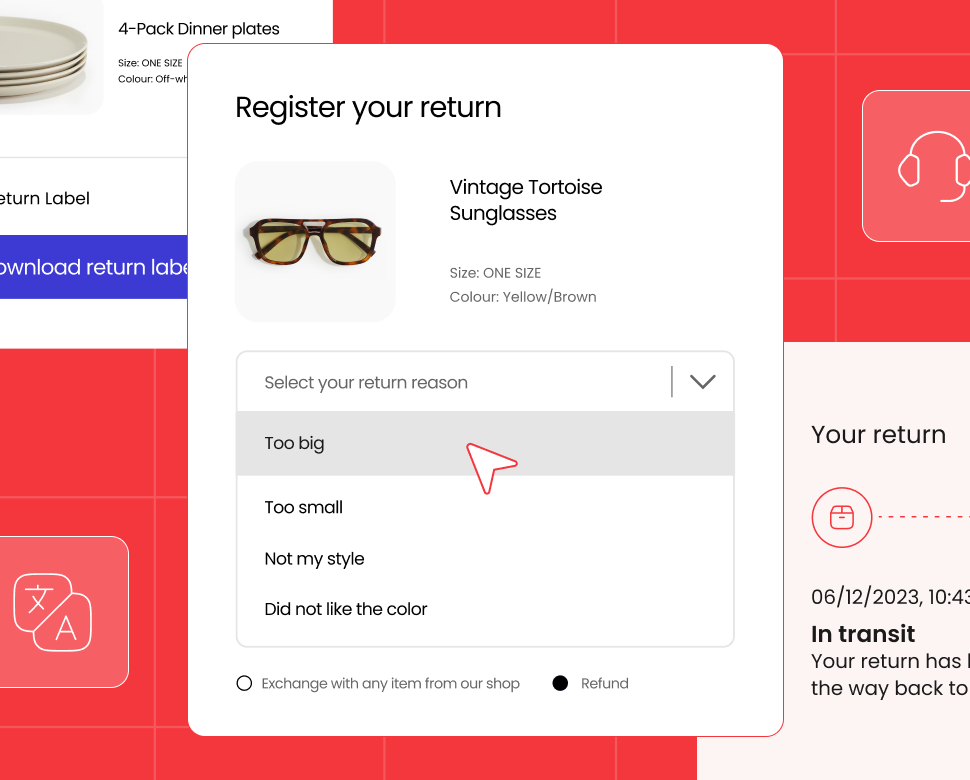What is Self-Service Return? Why Should Retailers Care?

Learn how self-service returns help e-commerce retailers reduce customer service demand and costs, while delivering a joyful returns experience for shoppers.
As e-commerce popularity grows, so does the pile of returns that chip away at retailers’ profits. According to NRF, a whopping $816 billion worth of merchandise was returned in 2022. What’s worse is 78% of consumers felt that a recent returns experience was inconvenient, as a Pitney Bowes BOXpoll survey found. An effortless self-service returns process is one solution that retailers are putting in place to address customer experience frustrations and increasing expectations, while also managing costs.
What are self-service returns for e-commerce?
Self-service return refers to a process where shoppers conveniently return items using a returns portal or webpage. This interactive experience lets customers easily choose items from their order to return or exchange, share why and how they want to return them, and then print labels or receive QR codes to complete the process. Simple! And all without having to contact customer service for help. Customers then package their return for pick-up or drop-off to a designated carrier or location. With digital QR codes you don’t even require a box or label. Can’t get more convenient than that!

Included in the self-service returns package are components such as an already paid returns label from the preferred logistics provider, step-by-step instructions on how to return the package, and a status overview for tracking the returns status in the customer’s account. Some multichannel retailers also offer the option of dropping off the goods at their physical store or having the logistics provider pick it up at home.
All with the aim of creating an effortless returns process that is as simple, fast and stress-free as possible for the customer.
The effortless self-service return approach can also handle more complex return processes like damage claims, warranty repairs or replacements. Retailers can prompt shoppers to supply additional details and photos, so they can approve and process claims faster – delivering a better customer experience while saving on customer service costs. Smooth!
Why should retailers care about self-service?
In addition to providing customers with an effortlessly easy and truly enjoyable experience, self-service returns hold a lot of advantages for retailers.
1. No need for paperwork and pre-printed labels in each package
Around 20% of items get returned, depending on the type of merchandise. This means that if you ship 10 million orders a year, 8 million pre-printed labels are likely to go to waste. Self-service returns can not only save a lot of paper, but also significantly reduce associated costs and simplify the order-packing process.
2. More efficient warehouse operations
With a paper-based process, retailers only know what has been returned once the package is received and processed at the warehouse. With a digital self-service returns process, retailers get more data faster. They know exactly which items in an order have been selected for return and why. While the items will still need to be inspected, it helps retailers plan and staff based on each day’s expected returns volume. They can also determine which items can be restocked and which may need to be disposed of or recycled earlier.
3. Improved data collection and inventory management
Having more immediate information allows e-commerce teams to analyze the reasons why items are being returned and use that knowledge to make changes and reduce the likelihood of future returns. For example, they may update sizing and fit recommendations in clothing descriptions or update photos if colors are not represented as customers expect. Smart!
Product teams can also use returns data to improve future product iterations if, for example, customers complain that a feature is too difficult to use, or a part wears out sooner than expected.
4. Revenue protection and faster re-purchases
Effortless self-service returns offer retailers the opportunity to recapture revenue that otherwise would be lost by offering exchanges, store credits or gift cards in place of refunds. By promoting relevant products and promotions during the returns process, shoppers can also be enticed to make repeat purchases sooner.
5. Elevated customer experience and loyalty
Last but not least, retailers gain the opportunity to communicate more frequently with customers when they are most receptive and emotionally invested – while waiting for an exchange or refund – leading to increased loyalty and retention.
Returns process and self-service are here to stay
A recent Digital Commerce 360 survey revealed that nearly half of all retailers plan to increase spending on keeping existing customers in 2023. Making returns more convenient through self-service initiatives is a key area of opportunity. With more data, retailers can be more in tune with customer needs, create engaging and personalized returns experiences and provide proactive customer support. It’s a win-win for e-commerce retailers and shoppers alike. Hooray!
Read all of the Returns Management Playbook Chapters:
Chapter 1 – What is Returns Management?
Chapter 2 – Returns Management: Challenges and Best Practices
Chapter 3 – How to Reduce Your Return Rate: 11 Tips For Fewer Returns
Chapter 4 – What is Self-Service Return? you are here
Chapter 5 – Guide to Retail Returns Management read next chapter
Chapter 6 – The Best Return Management Software
Chapter 7 – Understanding B2C Europe Returns
Chapter 8 – The Complete Guide to Retail Returns Marketing



